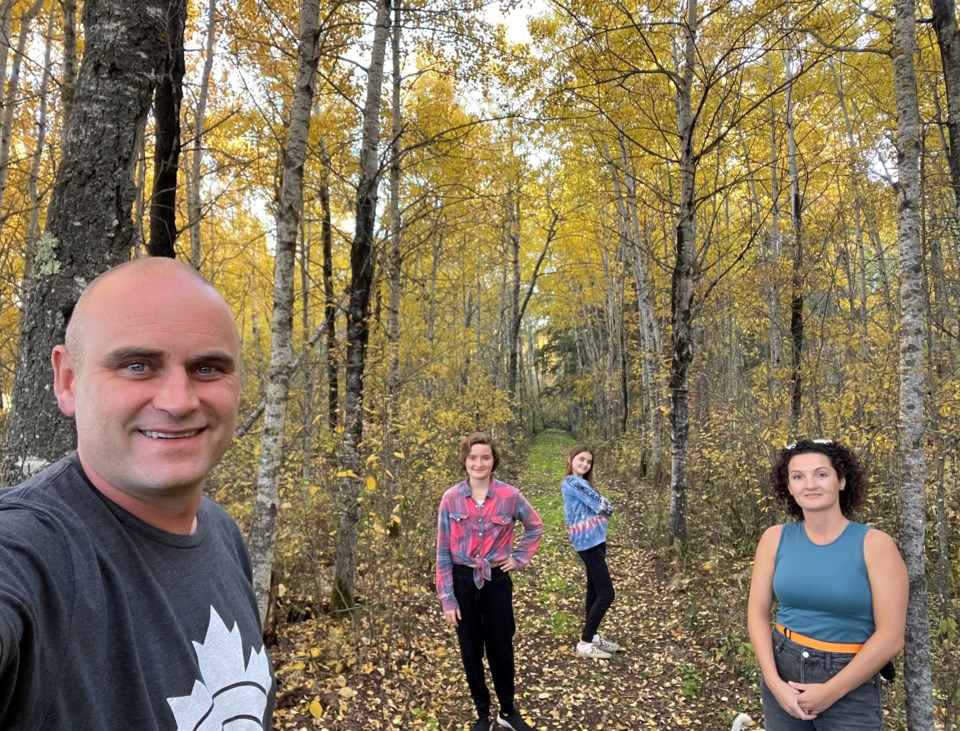BONNYVILLE – Dr. Travis Webster fills many roles in the Bonnyville area as one of the community’s few physicians in comparison to the region’s population.
With the topic of medical staff shortages ongoing in the public sphere, Webster agreed to weigh in from a local physician’s perspective.
“There are many vacancies for physicians in all towns in northern Alberta, so the pressure is across the board,” Webster told Lakeland This Week.
Staff shortages do not stop with doctor vacancies. All medical related jobs have historically faced staffing challenges – and still do, he said.
Over the last year, municipal councils across the Lakeland have regularly discussed the reality of hospital bed closures and ongoing vacancies for medically trained professionals.
Many discussions have been sparked by the loss of surgical capability in area hospitals, the extended closure of hospital beds in Bonnyville, Cold Lake, Elk Point and St. Paul, and the reduction of hours at Elk Point’s Emergency Room.
In recent months, MD of Bonnyville councillors have also discussed how the lack of local medical professionals has caused ambulances and EMS staff to act as a taxi service transporting patients between healthcare facilities. As a result, paramedics are working longer hours and emergency equipment is unavailable while operating outside the community.
“The solutions are complex,” acknowledged Webster. “This crisis of healthcare workers, and I mean to include everyone – nurses, lab (and) imaging technicians, social workers, mental health counsellors, pharmacists, physical therapists, occupational therapists, maintenance, environmental, administrative, nurse practitioners, physicians – has been longstanding in rural Alberta for decades.”
Currently, the average wait to see a family doctor in Bonnyville is 45 days, said Town of Bonnyville’s mayor, Elisa Brosseau, during a council meeting on Dec. 14.
Brosseau learned of the long wait time through the Bonnyville Physician Recruitment and Retention Committee that she sits on with representatives from Alberta Health Services, local medical personnel, MD of Bonnyville Reeve Barry Kaliniski and other councillors from the Town and MD.
Webster confirmed that a 45-day wait for Bonnyville residents to see a family physician was accurate.
“It can fluctuate month to month but is consistently quite long. I do not have access to zone or other areas, but anecdotally patients often tell me that it is a very long wait in many rural areas,” he said.
“It has been exposed with the pandemic and has resulted in closed beds or reduced services in all our hospitals in this region over the past year – not just the past month.”
Positions for nursing, microbiology, lab, physician and others have been vacant in the community for years without any applicants responding to job postings, noted Webster.
“I am optimistic it can be corrected, but over a long timeline and with significant local and provincial support.”
With a higher per capita number of family physicians in cities compared to rural areas, urban practitioners can be in clinics more frequently because they may not need to switch their medical caps.
“Rural physicians also cover hospital care, ER care, obstetric care, anesthesia and surgeries, which means they can only be in clinic a few days a month,” he said.
In general, urban physicians have shorter wait times for their clinic hours as a result.
The root cause of persistent vacancies is varied, Webster said, and can include changing practice interests or people wanting to live in regions that are more urban.
He noted that “All of (Bonnyville’s) physicians who have left in the last 10 years have moved to British Columbia or major cities in Alberta.”
In regard to staff turnover rates within the community, Webster added, “I wouldn't say that Bonnyville has the highest, just that turnover for all health care related fields, historically, is quite high and that certainly fits for physicians.”
However, relief may soon be felt in the Lakeland region with additional physicians joining the ranks in St. Paul starting in the new year.
“We are always excited to hear when new physicians are joining our local communities and each addition helps the region as a whole,” said Webster. “Rural patients deserve equal care to those in urban settings and unfortunately, for many years this had not been in the case in northern Alberta, in my opinion.”
These issues are connected to the difficulty in recruiting and retaining all healthcare workers, he said.
“As citizens of this region, we should expect better. Our current healthcare workers are dedicated and working extremely hard, they just need more support.”
'Grow our own, know our own'
Webster, who is also a part of the recruitment and retention committee, believes that one way to retain more medical staff locally is by developing medical workers from within the community.
“My belief, and the efforts of our recruitment committee, are in 'grow our own, know our own,'” he said. “It is well supported that people from a rural area are more likely to return and practice in that area.”
Although it is not always the case, it is more likely to retain staff who are from the region than attracting people from urban areas, he said.
One way Webster would like to grow local talent is through post-secondary partnerships and holding job fairs or education sessions with the assistance of the committee.
“Where I would like to see expansion is in 'grow our own,' where we would connect more with high school students and inform them of the amazing opportunities in health care. Whether it be nursing, counselling, technical or physician areas – there are countless great job opportunities.”
There are also financial incentives to encourage medical students to work in rural settings, such as the NADC bursary, signing bonuses from the North Zone AHS and interest free loans made available through the recruitment committee.
Webster is a physician at the Bonnyville Healthcare Centre and Bonnyville Medical clinic. He has practiced in the community for nine years.



